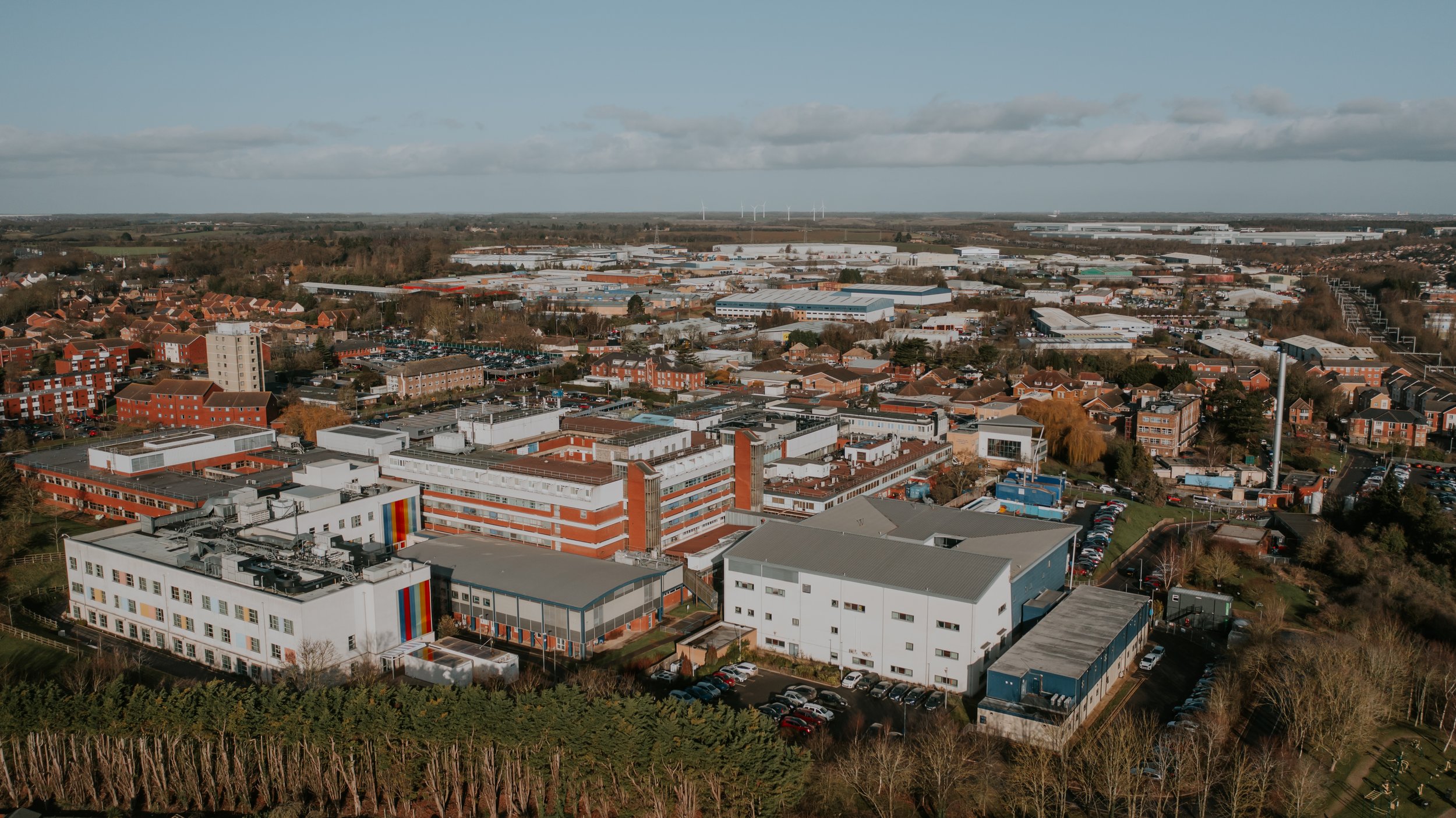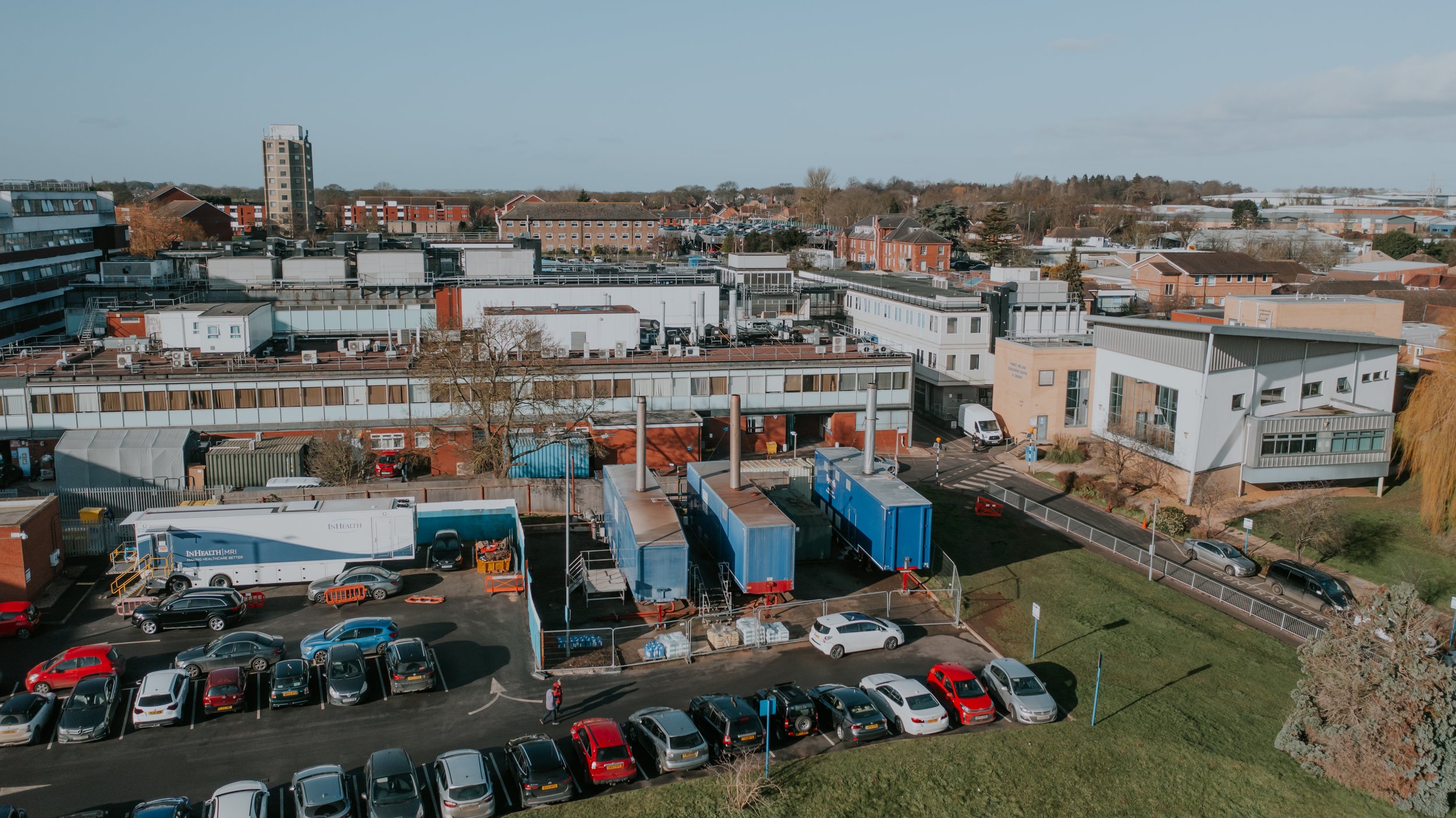Kettering General Hospital
Client: Kettering General Hospital NHS Foundation Trust

Our Approach
The brief
CPW have been appointed to support the redevelopment of Kettering General Hospital under the Health Infrastructure Plan (HIP2) through the replacement of aging site-wide energy infrastructure. CPW are also supporting the development of a net zero carbon pathway to ensure the Trust meets the NHS target to achieve net zero operational carbon by 2040.
The main hospital site previously operated on a steam heating network that was more than 50 years old. It was running on temporary steam boilers and required continuous intervention. The existing private high voltage electrical network, whilst still in satisfactory working condition, did not have the capacity to accommodate the redevelopment of the hospital and was supported by aging standby power generation that did not meet current standards for an acute hospital site.
The project requires the replacement of the existing site wide district heating network and high voltage power network, and the delivery of a pathway to net zero carbon.
Low carbon energy centre
The project involves the construction of a new energy centre comprising low carbon heat sources and standby power equipment, along with a new low temperature district heating network and private high voltage power network.
The team undertook an analysis of the existing site, including extensive surveys, system validation exercises, and desktop reviews of all available record information. From this, we carried out detailed modelling of the energy networks which is used to propose a number of different low carbon heat source solutions, including biofuel combined heat and power, and high temperature air source heat pumps.
A rigorous evaluation and scoring process was conducted alongside the client to ensure the most appropriate low carbon heat source was selected. This considered everything from CAPEX, OPEX, industry knowledge and skills, to maximising the use of clean energy.
The agreed solution was a new low temperature district heating network that would be served by ammonia driven, high temperature, air source heat pumps (ASHP’s) – a first for the NHS. In the short to medium-term, to allow for existing building stock to be refurbished to a standard suitable for efficient operation at low heating temperatures, the ASHP’s would initially operate alongside high efficiency gas fired boiler plant to meet winter peak loads. This also provides a commercial balance between reducing carbon emissions as far as possible and efficient use of electrical energy.
The primary drivers for adopting the use of ASHP’s were to utilise clean energy in the form of green electricity, which could be further supported on site using solar photovoltaic arrays across the entirety of the estate. Other influencing factors also included reliability and ease of maintenance when compared to other solutions such as biomass.
This was accompanied by large scale standby generation at high voltage and an upgraded private high voltage network. These will be futureproofed to enable the continued decarbonisation of the site through further electrification of heat and the implementation of renewable energy generators.
Net zero pathway
The team also developed a pathway for the site to achieve net zero operational carbon by 2040. Before this could be developed, we first had to establish a baseline from which projected carbon emissions could be measured, which was achieved through the assessment of historic energy and carbon reporting data.
The catalyst for the net zero carbon pathway was the proposed new energy centre and district heating network which was predicted to achieve a carbon reduction of upwards of 40% over the baseline target.
The team then explored all possible interventions that could be considered to continue the decarbonisation of the site over the next 20 years. These interventions included demolition of building stock that was no longer fit for purpose, refurbishment of critical buildings to be retained, site wide services upgrades such as LED lighting replacements and the introduction of energy recovery to air handling plant, and finally large-scale deployment of renewable energy generators, such as solar photovoltaic arrays.
In addition to these projects the pathway also considered the continued future decarbonisation of the electrical grid.



